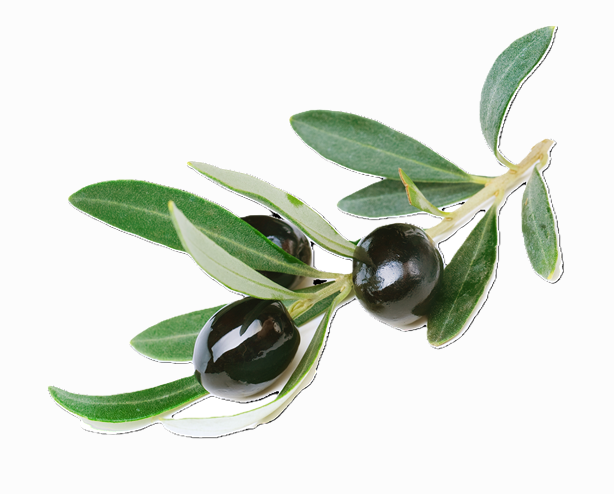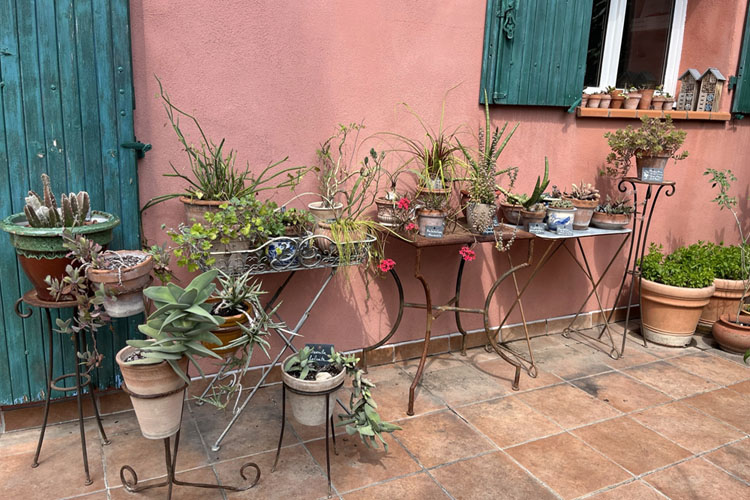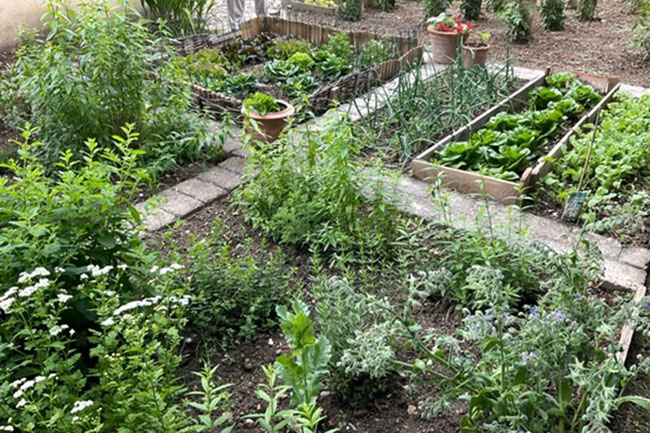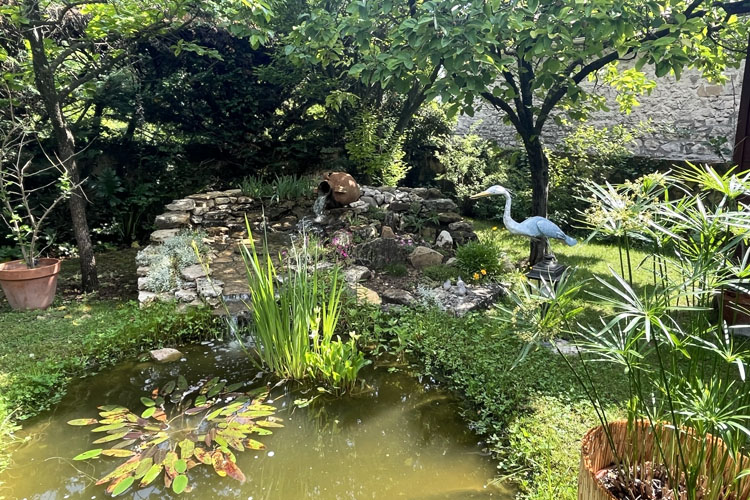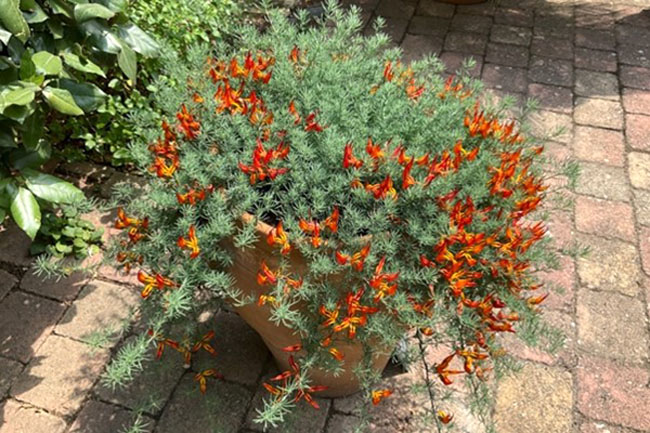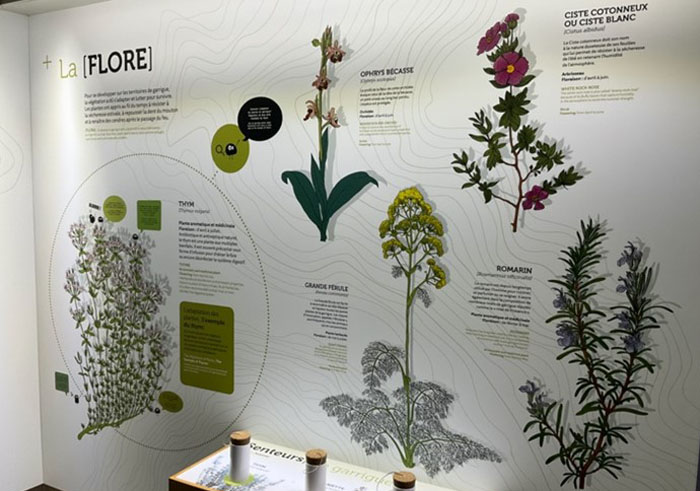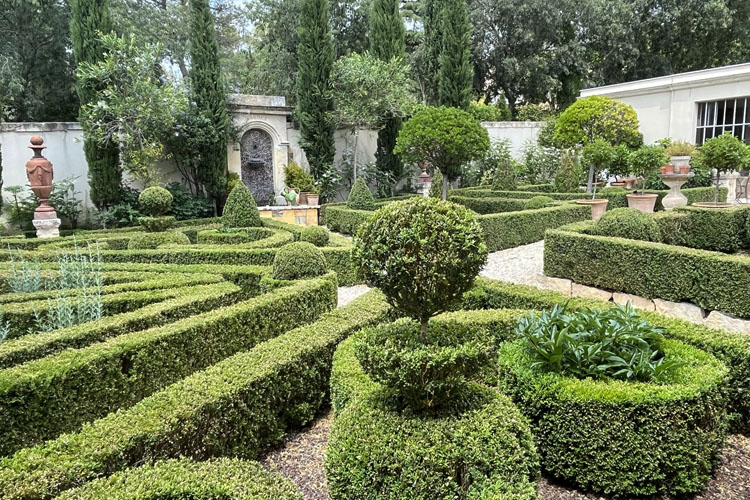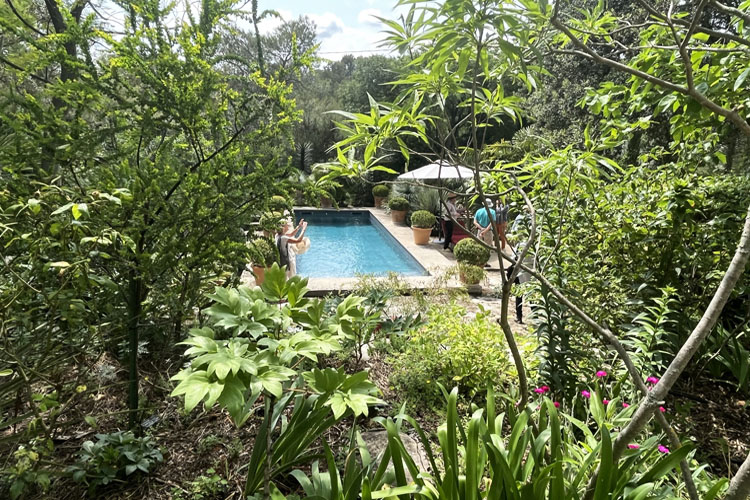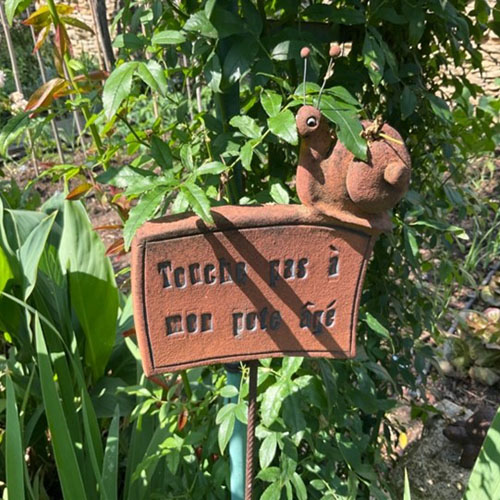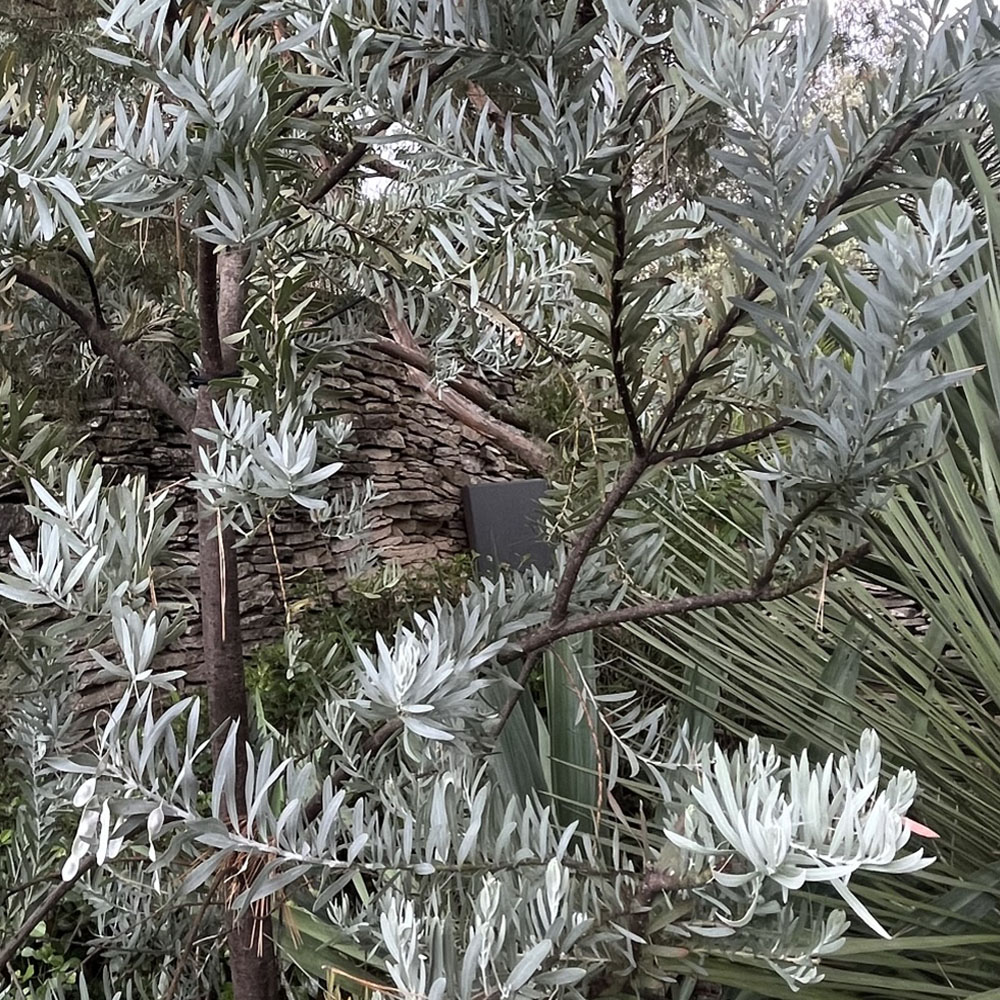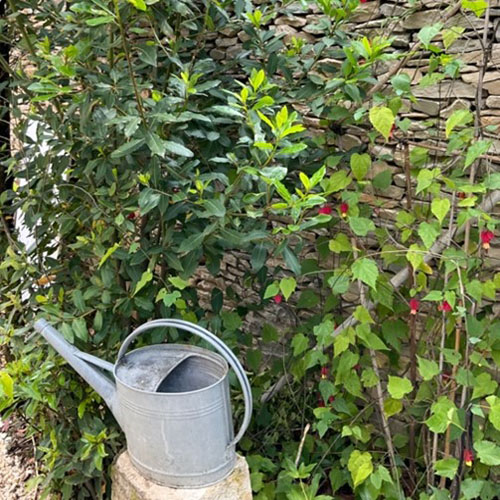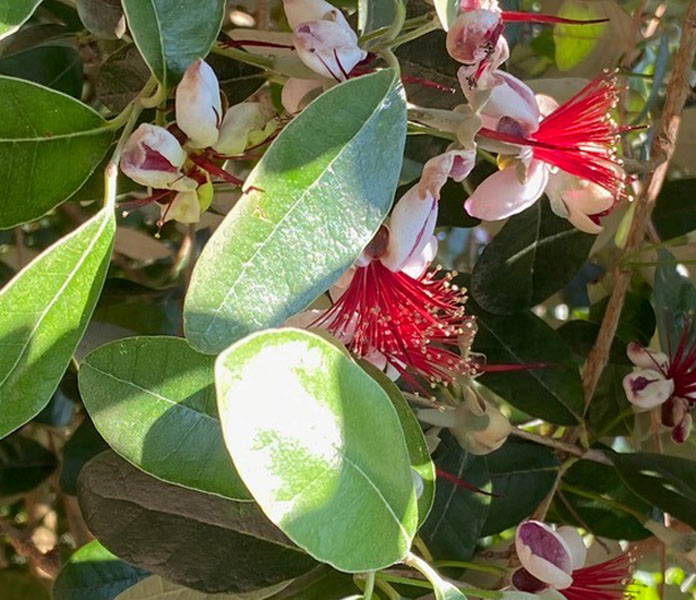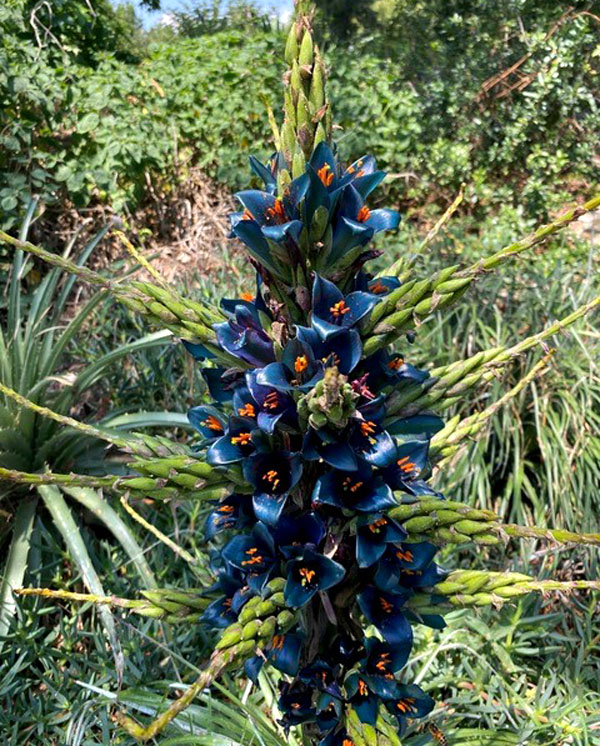L’Assemblée Générale 2023 et visites aux jardins
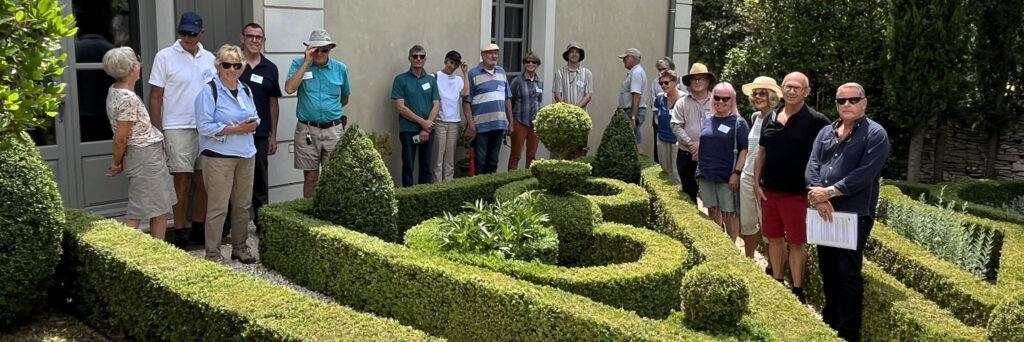
Click on the images to enlarge them / Cliquez sur les images pour les agrandir
This report is about the two days of visits surrounding our AGM on 1 June 2023. The visits took place in two départements: Gard and Bouches-du-Rhône.
Ce compte-rendu relate nos deux jours de visites relatives à notre Assemblée Générale du 1er juin 2023 qui ont eu lieu sur deux départements : le Gard et les Bouches-du-Rhône.
On May 30, a phone call from Lina alerted me to the extreme weather forecast for the next two days. Unsure what to do, I hesitated until the last moment to make a decision that would break my heart – should we cancel? In the end, I let my heart rule my head, though I did set up a last-minute Plan B in case of severe storms. However, on the day, the heavens were with us, and Plan B wasn’t needed!
Après ce coup de fil de Lina le 30 mai, m’alertant au sujet des prévisions météorologiques plus que dramatiques pour les jours à venir, je me suis posée beaucoup de questions et jusqu’au dernier moment, j’hésitai à prendre une décision qui me fendait le cœur : annuler ou pas ? J’ai finalement tranché pour mon cœur et pas ma raison tout en ayant trouvé un plan B de dernière minute. Mais, les cieux ont fait beaucoup d’efforts durant ces deux jours et nous n’avons pas eu recours au plan B !
So, on 31st May, we visited two gardens without problems, apart from a downpour at the end of the second visit which was easily managed.
Donc, le 31 mai, nous avons visité ces deux jardins sans encombre avec tout de même une averse en fin de visite sans aucune conséquence.
.
The Jardin de la Chapelle, located in the small village of Garrigues-Sainte-Eulalie, is a garden for plant enthusiasts. It is open to the public by appointment, allowing its owner to partly finance his charitable association ‘Chengdoma’ which provides educational opportunities to children and young people in Nepal.
Le jardin de la Chapelle, situé dans le petit village de Garrigues-Sainte-Eulalie, est un jardin de passionné. Il s’ouvre sur rendez-vous, permettant à son propriétaire de financer en partie son association « Chengdoma » qui offre des possibilités d’éducation aux enfants et aux jeunes au Népal.
The garden, of around 2000 square metres, was initially planted with a Mediterranean plant palette. As its owner’s interests broadened through world travel, the garden evolved and expanded to include more exotic species, today there are more than four hundred varieties.
Mesurant environ deux-mille mètres carrés, le jardin était initialement planté d’une palette végétale méditerranéenne. Au gré des voyages de ses propriétaires tout autour du monde, il a évolué et s’est étoffé d’essences bien plus exotiques, comptant plus de quatre cent variétés aujourd’hui.
The garden has several sections: a shady area at the entrance, a spot by the side of the house filled with cacti and succulents in pots, a vegetable patch, a small pond and an area with a ‘romantic’ feel.This was a garden in which to happily stroll, taking care, of course, not to step on the tortoises!
Le jardin comporte plusieurs espaces : une zone ombragée à l’entrée, un coin de cactées et succulentes en pots coté maison, un potager, un bassin et un espace plus « romantique ». Nous avons pu nous balader avec plaisir dans ce jardin en prenant garde, tout de même, à ne pas marcher sur les tortues !
Next, we moved on to the small village of Sainte-Anastasie to visit the Maison des Gorges du Gardon. This museum space is located at the entrance to the Gardon gorges and presents the history, heritage, fauna and flora of this natural environment, which has been inhabited since prehistoric times.
Nous nous sommes ensuite tous retrouvés dans le petit village de Sainte-Anastasie où se trouve la Maison des Gorges du Gardon. Cet espace muséographique est situé à l’entrée des gorges du Gardon et présente l’histoire, le patrimoine, la faune et la flore de ce milieu naturel habité depuis la préhistoire.
At lunchtime we found a spot by the river, lulled by the rippling water, and enjoyed our picnic whilst chatting happily with each other.
Nous avons finalement pu nous installer au bord de la rivière, bercés par le gargouillis de l’eau et avons dégusté notre pique-nique tout en bavardant joyeusement les uns avec les autres.
The second garden of the day was a little marvel, created by Emmanuel, an interior designer and landscaper, and his partner, Claude. The land, purchased in the 1990s, was once a quarry and dump for old cars. Massive additions of topsoil were therefore necessary before planting could commence.
L’autre jardin de la journée est une petite merveille imaginée par Emmanuel, architecte d’intérieur et paysagiste et son compagnon Claude. Le terrain, acheté dans les années 90, fut jadis carrière et décharge automobile. Des apports massifs en terre végétale ont donc été nécessaires avant tout travaux de plantation.
The sun-drenched garden is divided into several different spaces; an Italian garden, the cacti terraces, the swimming pool area with numerous citrus trees in pots and a part where exotic plants and ‘garrigue” were mixed together.
Plusieurs parties sont à découvrir dans ce terrain baigné de soleil : le jardin à l’italienne, les terrasses de cactées, le coin piscine avec de nombreuses poteries d’agrumes et une partie mixant des végétaux exotiques et de garrigue.
The garden is regularly enriched by new plants, discovered during the owners’ world travels. However, the collection is carefully curated and always remains constant in one aspect: the plants must not need too much water. Many of the plants are in the glaucous palette, pale greys, blues and greens, with architecturally interesting foliage. A few sculptures punctuate the planting, giving the garden a unique and charming character.
Ce jardin n’a de cesse de s’enrichir de nouveaux sujets lors des voyages des propriétaires autour du monde. Mais la palette reste toujours réfléchie et fidèle à un point : ne pas être trop gourmande en eau. On découvre donc en ces lieux tout un camaïeu de glauques et de verts ainsi que de graphismes divers grâce aux feuillages. Quelques sculptures viennent ponctuer le lieu, lui conférant un peu plus encore, un caractère unique et plein de charme.
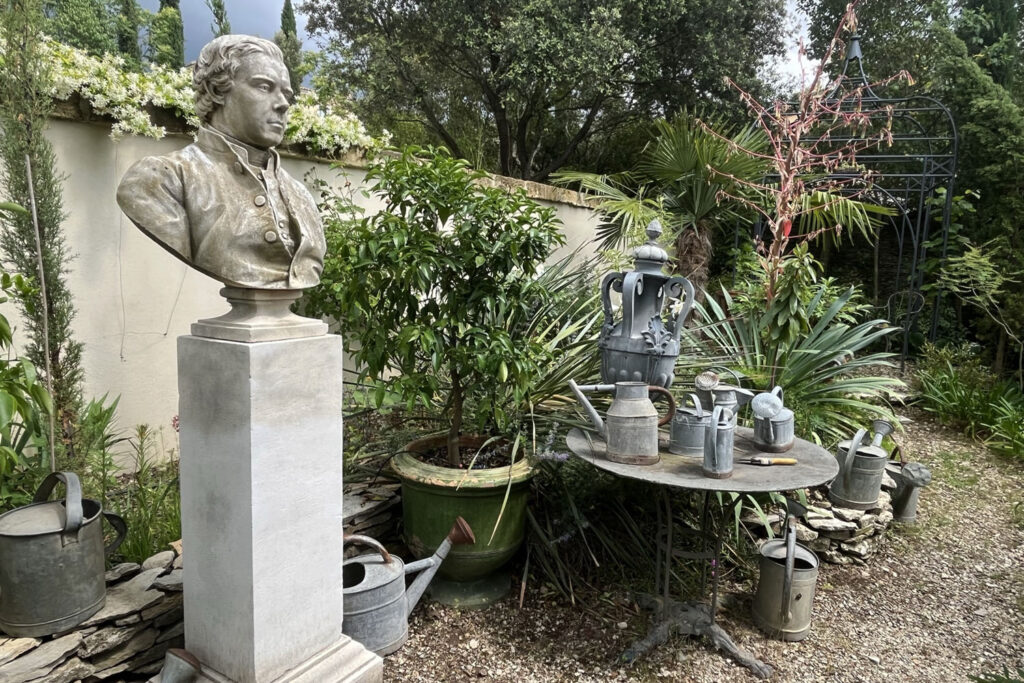
.
Our second day, 1 June, began with a visit to the botanical garden at Château Pérouse, in the commune of Saint-Gilles. Several botanists guided guests in small groups. We strolled along 130 metres of artificial watercourse below the mature pines and cedars near the château. Water tumbles across a rocky bed, with plants skillfully chosen to give a serene Japanese atmosphere, including a red-leaved maple with twisted branches and cloud-pruned shrubs. Two bridges cross the stream, while waterfalls and rapids fill the air with the sound of bubbling water.
Le 1er juin, notre seconde journée, commence par la visite du jardin botanique du Château Pérouse, situé sur la commune de Saint-Gilles. Plusieurs botanistes du château guident les invités par petits groupes qui déambulent le long d’un cours d’eau artificiel de 130 m de long construit sous les grands pins et cèdres près du château. L’eau s’écoule dans un lit rocheux où des plantes ont été habilement choisies afin de donner une atmosphère japonaise sereine (un érable à feuilles rouges aux branches tordues, des arbustes taillés en nuage). Deux ponts enjambent le cours d’eau, tandis que les chutes d’eau et les rapides emplissent l’air du bruit de l’eau bouillonnante.
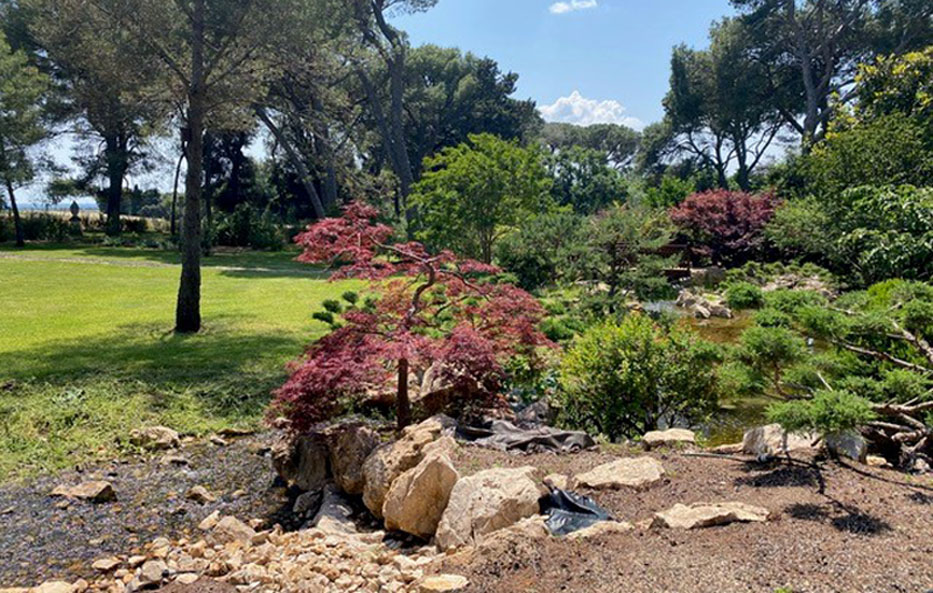
In the Australian garden, winding paths lead through young forests of eucalyptus and acacia, already of impressive size after only a few years. A hedge of callistemon is covered with scarlet bottlebrush flowers. In the South American zone, the stars of the show are a beautiful Feijoa sellowiana with its shiny leaves and frilly pink and red flowers, and a marvelous Puya berteroniana, whose flowers are an extraordinary shade of metallic blue.
Dans le jardin australien, des chemins sinueux mènent à travers de jeunes forêts d’eucalyptus et d’acacias, dont la taille est déjà impressionnante après seulement quelques années. Une haie de callistemon est couverte de fleurs écarlates. Dans la zone sud-américaine, les vedettes sont un beau Feijoa sellowiana avec ses feuilles brillantes et ses fleurs roses et rouges froufroutantes, et un merveilleux Puya berteroniana, dont les fleurs sont d’une extraordinaire nuance de bleu métallique.
Great care is given to providing the different plants with suitable substrates, even to the extent of bringing in volcanic rock from elsewhere in France. And nature thrives here. Birdsong is almost deafening, as the site offers shelter to many different species: nightingales, orioles, rollers and cirl buntings among them. This was an illuminating and most enjoyable visit.
Un grand soin a été apporté aux substrats des différentes plantes, allant même jusqu’à faire venir de la roche volcanique d’autres régions de France. Et la nature s’y épanouit. Le chant des oiseaux est presque assourdissant, car le site offre un abri à de nombreuses espèces : rossignols, loriots, rolliers et bruants zizis entre autres. En somme, une visite enrichissante et super agréable.
At the end of the garden visit we came upon an immaculate lawn under centuries-old pine trees. Here we had coffee, then sat down for the Annual General Meeting (see report in the members’ section). There were 47 of us, including Mark Barnett, president of the Australian branch of the MGS, who honored us with his presence, accompanied by his son.
Nous nous sommes retrouvés ensuite au beau milieu de la pelouse immaculée sous les pins centenaires pour une tasse de café avant de pouvoir procéder à notre assemblée générale (voir le compte-rendu dans l’espace des membres). Nous étions 47 y compris Mark Barnett, président de la branche australienne de la MGS, qui nous a fait l’honneur de sa visite accompagné de son fils.
The meeting was followed by a verre de l’amitié, offered by MGF, and we were able to chat with the château’s team of botanists and gardeners. Finally, a most original “déjeuner sur l’herbe” awaited us, composed of savory and sweet pancakes served by a wonderfully efficient and attentive team.
Autour du verre de l’amitié, offert par l’association, nous avons pu discuter avec les botanistes et jardiniers du château. Enfin, un « déjeuner sur l’herbe » très original nous attendait, composé de crêpes salées et sucrées servis par une équipe oh combien efficace et attentionnée.
Then, to finish off this magnificent day, we went to Arles, to visit the landscaped park of the brand new LUMA museum, located on the Parc des Ateliers, an 11-hectare railway site originally operated by the Paris-Lyon-Méditerranée (PLM) company, which became the SNCF in 1938.
Puis, pour clôturer cette magnifique journée, nous irons en Arles, visiter le parc paysager du tout nouveau musée LUMA qui se situe sur le Parc des Ateliers, site ferroviaire d’une superficie de 11 hectares exploité à l’origine par la compagnie Paris-Lyon-Méditerranée (PLM) et qui deviendra en 1938 la SNCF.
The LUMA Foundation was created in 2004 by Maja Hoffmann in Zurich, Switzerland, to support artistic creation in a wide range of fields. In 2013, she launched LUMA Arles, a creative campus open to artists and the general public for both production and experimentation. Seven of the park’s industrial buildings have been renovated and now host exhibitions, presentations and artists’ residences.
La Fondation LUMA a été créée en 2004 par Maja Hoffmann à Zurich, en Suisse, afin de soutenir la création artistique dans de multiples domaines. En 2013, elle lance LUMA Arles, un campus créatif à la fois lieu de production et d’expérimentation pour les artistes comme pour le grand public. Sept bâtiments industriels du Parc ont été rénovés et reçoivent des expositions, des présentations ou accueillent les résidences d’artistes.
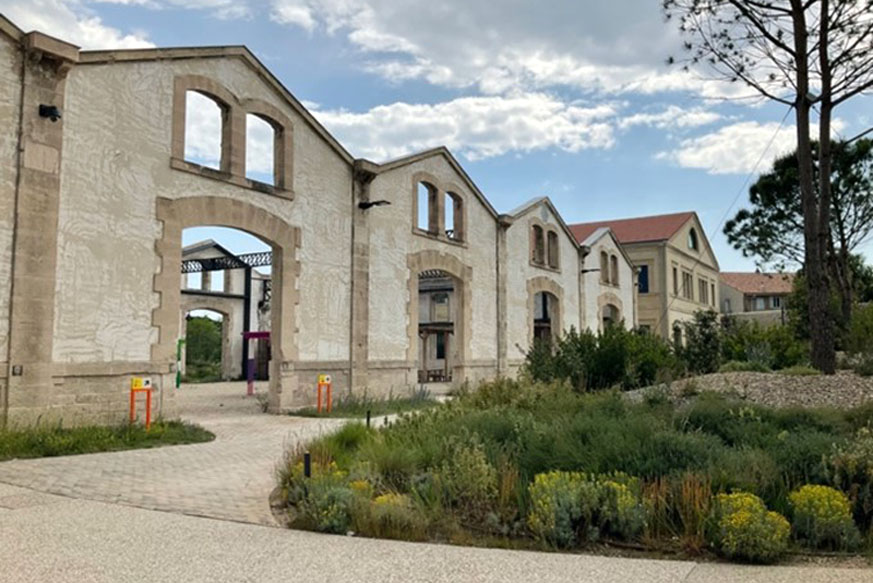
The gardens, park and pond which surround the campus are the work of landscaper Bas Smets. Designed as a journey through the space by the fauna and flora that inhabit it, the 4-hectare park is a place of life, interaction and leisure open to all.
Les jardins, le parc et l’étang qui entourent le campus sont l’œuvre du paysagiste Bas Smets. Conçu comme un voyage à travers la région par la faune et la flore qui l’habitent, le parc de 4 hectares est un lieu de vie, d’échanges et de loisirs ouvert à tous.
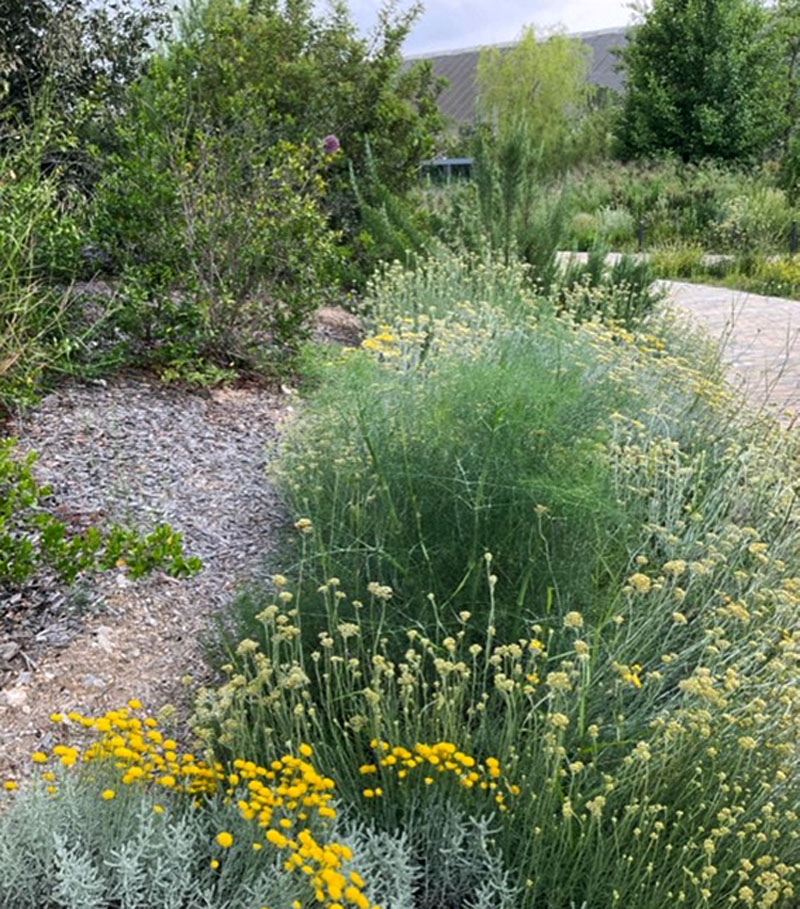
The park is planted with 500 trees and includes a large pond. Its current natural and luxuriant appearance belies the colossal development work that was necessary. The original concrete screed had to be left intact because it protects a Roman necropolis buried beneath it. It was therefore necessary to design artificial water tables, and to import large quantities of soil to create spaces representing three different local environments: the Camargue with its aquatic plants, the Alpilles with plants adapted to dry soils, and the Crau plain with its large pebbles from the lagoons. The trees (Arbutus unedo, Acer monspessulanum, Quercus ilex and Pinus pinea) and plants are all Mediterranean species. The pond operates as a closed circuit and benefits from the proximity of the Craponne canal to keep it filled.
Le parc est planté de 500 arbres et comporte un vaste étang. Son aspect naturel et luxuriant ne peut faire imaginer les colossaux travaux d’aménagement qui ont été nécessaires. En effet, il a été conçu sur la chape de béton originelle. Elle a été laissée intacte car elle protège une nécropole romaine enfouie dans le sol. Il a donc fallu concevoir des nappes phréatiques artificielles, apporter de grandes quantités de terre pour aménager des espaces représentant trois milieux locaux différents : la Camargue avec les plantes aquatiques, les Alpilles avec des plantes de terrain sec et la plaine de la Crau avec les galets dans l’étang. Les arbres (Arbutus unedo, Acer monspessulanum, Quercus ilex et Pinus pinea) et les plantes sont des espèces méditerranéennes. L’étang fonctionne en circuit fermé et profite de la proximité du canal de Craponne pour son remplissage.
At the heart of the park stands the Tower, designed by architect Frank Gehry, and opened in 2021. It contains a range of multi-purpose spaces: exhibition halls, workspaces and research facilities. At first glance, this modern tower may seem surprising, with its circular base evocative of an arena and its twisted façade adorned with stainless steel bricks evoking the rocks of the Alpilles. But when you take the time to look carefully at the way its complex shapes reflect the sky, you can’t help but be captivated. This was particularly true on the day of our visit, when the sky was filled with magnificent clouds.
Au cœur du Parc s’élève La Tour imaginée par l’architecte Frank Gehry inaugurée en 2021 qui se compose de différents espaces à usages multiples : salles d’exposition, espaces de travail, de recherche. A première vue cette tour moderne peut surprendre avec sa base circulaire évocatrice des arènes et la façade torsadée ornée de briques en acier inoxydable évoquant les rochers des Alpilles. Mais quand on prend le temps de regarder ses variations lumineuses qui reflètent celles du ciel, on ne peut être que captivé. C’était en particulier le cas le jour de notre visite avec un ciel chargé de magnifiques nuages.

Text and photos: Lina Tchagaspanian, Michèle Bailey, Roland Leclercq, Chantal Guiraud
![]()
